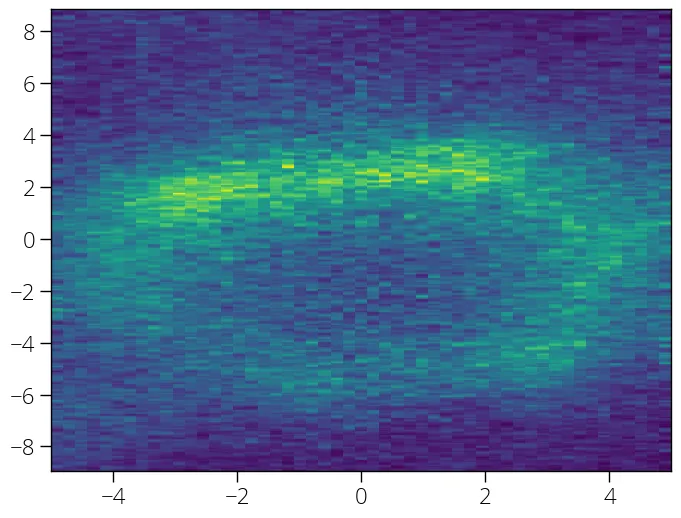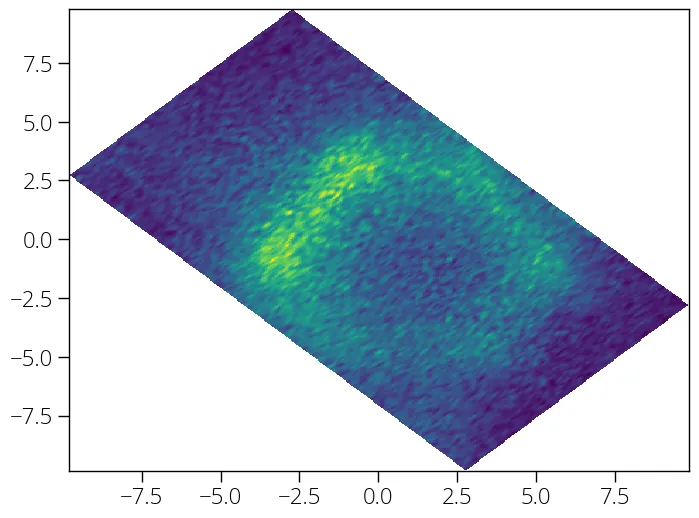Rotate Fermi map data
If your Fermi map measurement was not done keeping the high symmetry directions
along the slit direction (or perpendicular to the slit direction), and you need
to rotate the collected data in order to make the high symmetry directions along
the x- or y-coordinate, the rotate_2d and rotate_3d functions come handy.
Remember positive rotation angle rotates clockwise, and center of rotation is at
(, ).
rotate_2d can rotate a 2D array with respect to its surface normal. Let's get
some Fermi map data first.
import arpespythontools as arp
import matplotlib.pyplot as plt
%matplotlib inline
url = 'https://pranabdas.github.io/drive/datasets/arpes/sample_map_data.zip'
data, energy, theta, phi = arp.load_ses_map(url)
# Plot one slice
plt.figure(figsize = (8, 6))
plt.imshow(data[150, :, :], origin = 'lower', aspect = 'auto', \
extent = (phi[0], phi[-1], theta[0], theta[-1]))
plt.show()
This is how a constant energy cut looks like before rotation:

Now, we can rotate only a single slice first.
data_r, theta_r, phi_r = arp.rotate_2d(data[150, :, :], 45, theta, phi)
# Plot one slice
plt.figure(figsize = (8, 6))
plt.imshow(data_r, origin = 'lower', aspect = 'auto', \
extent = (phi_r[0], phi_r[-1], theta_r[0], theta_r[-1]))
plt.show()
Let us plot a slice again. This is what we get after the rotation.

Rotate 3D Fermi map data
Instead of rotating only one slice, we can also rotate the full 3D array.
rotate_3d function needs the 3D map data (with first dimension along the
energy, second and third dimensions are and , respectively) as
input. It needs and vectors as input as well. Provide the required
angle to rotate in degree as before. Axis of rotation is the first axis (i.e.,
energy). The function returns rotated data, new and vectors.
Let's see an example:
data_r, theta_r, phi_r = arp.rotate_3d(data, 45, theta, phi)
# we can plot a slice after rotation to get the above result
plt.imshow(data_r[150, :, :], origin = 'lower', aspect = 'auto', \
extent = (phi_r[0], phi_r[-1], theta_r[0], theta_r[-1]))
plt.show()